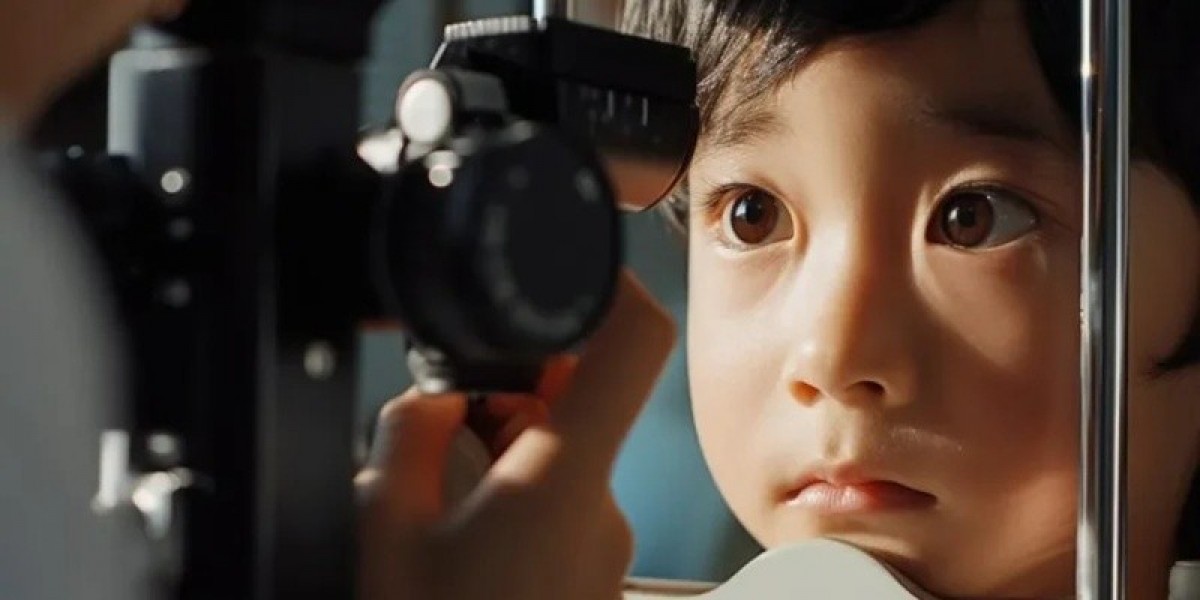When it comes to a child’s health, every parent wants the best—and eye health is no exception. Children are naturally curious and active, which makes their eyes vulnerable to injuries and infections. One such condition that often goes unnoticed until it becomes serious is a corneal ulcer. Understanding this eye emergency can help parents take timely steps to protect their child’s vision.
A corneal ulcer is an open sore on the cornea—the clear, dome-shaped surface that covers the front of the eye. In children, this can result from infections, injuries, or improper contact lens use. If left untreated, corneal ulcers can lead to vision loss or permanent scarring.
Recognizing the early warning signs and seeking the right corneal ulcer treatment is key. Parents play a crucial role in identifying symptoms early, ensuring their child gets the right care at the right time.
What Causes Corneal Ulcers in Children?
Bacterial or viral infections, often resulting from unclean hands or exposure to dirty water, can affect the cornea.
Eye injuries during play, particularly with sharp objects or dusty environments, can break the corneal surface.
Improper contact lens hygiene is a growing issue, especially in teenagers using cosmetic lenses without medical advice.
Other causes include foreign bodies in the eye, vitamin A deficiency, or pre-existing eye conditions like dry eye or eyelid deformities.
Symptoms Parents Should Watch For
Redness of the eye, often sudden and accompanied by discomfort.
Eye pain or a burning sensation, especially if your child complains of something “in the eye.”
Light sensitivity, causing the child to avoid bright lights or outdoor settings.
Excessive tearing or discharge, which may crust around the eyelids.
Blurry or reduced vision, which the child may describe as “cloudy” or “fuzzy.”
In young children, the signs can be subtle. They may become irritable, rub their eyes frequently, or avoid visual tasks. Prompt medical attention is critical, even if the symptoms seem mild.
Why Prompt Treatment Matters
Corneal ulcers progress rapidly, especially in young eyes. The cornea lacks blood vessels, which means the body’s natural defense system has limited access to the site. Once infected, damage can deepen quickly, leading to corneal scarring or even vision loss.
Timely and expert corneal ulcer treatment helps preserve the child’s vision and prevent complications. The earlier the treatment begins, the better the chances of full recovery without permanent damage.
Diagnosing Corneal Ulcers in Children
At a trusted eye clinic, diagnosis involves a detailed eye examination using a slit-lamp microscope. In some cases, fluorescein dye is applied to highlight the ulcer. Swabs may be taken to identify the specific bacteria or virus causing the infection.
For children, this process is done gently, with supportive care to ease discomfort. Clear communication and a calming environment can help reduce fear or anxiety during the exam.
Corneal Ulcer Treatment Options
Antibiotic or antiviral eye drops are usually prescribed to treat the infection and prevent its spread.
Steroid drops, if needed, may be used under close supervision to reduce inflammation.
Pain relief medications help manage discomfort and encourage cooperation with treatment.
Protective eye shields may be advised to prevent further irritation and avoid accidental rubbing.
Follow-up care is crucial to monitor healing and adjust treatment if needed.
In rare and severe cases, surgical intervention such as a corneal transplant may be considered. This is typically a last resort when scarring threatens vision permanently.
Preventing Corneal Ulcers: A Parent’s Checklist
Teach good hand hygiene and discourage children from touching or rubbing their eyes with dirty hands.
Avoid the use of over-the-counter eye drops without medical supervision.
Supervise contact lens use, ensuring lenses are prescribed, cleaned properly, and not worn overnight.
Provide eye protection during outdoor activities, sports, or dusty environments.
Encourage balanced nutrition, including foods rich in Vitamin A, which supports eye health.
Regular eye check-ups also help identify underlying conditions that could increase the risk of corneal ulcers.
Special Considerations for Young Children
Children under five may not be able to describe what they’re feeling. Instead, look for behavioral signs like squinting, covering one eye, avoiding light, or crying when trying to focus. Any unusual eye appearance or behavior should prompt an immediate visit to an eye specialist.
Delayed treatment can result in amblyopia (lazy eye), particularly if vision is blocked by corneal opacity. Early detection and appropriate care are vital to maintaining proper visual development.
Choosing the Right Eye Hospital for Your Child
When your child’s vision is at risk, choosing an eye hospital with pediatric expertise makes all the difference. Look for centers that offer:
Specialized pediatric ophthalmology services
Advanced diagnostic tools and infection control protocols
A caring and child-friendly environment that comforts both parents and children
Effective corneal ulcer treatment goes beyond prescriptions—it requires skilled hands, advanced care, and a compassionate approach.
Conclusion
Corneal ulcers in children are serious but treatable conditions. With early recognition, expert care, and ongoing follow-up, most children recover fully without long-term complications. As a parent, staying informed and vigilant is the first step in protecting your child’s sight.
For children requiring specialized care, Maxi Vision Eye Hospital stands as a super speciality eye hospital committed to safe, compassionate, and expert treatment. With advanced facilities and a focus on pediatric eye care, your child’s vision is in trusted hands.








